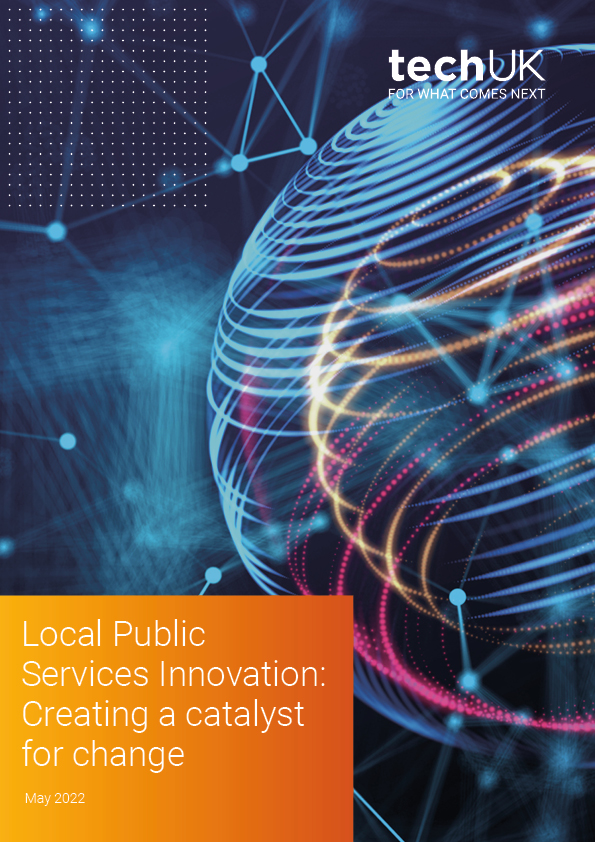Guest blog: The Future of Local Public Services
The impetus to innovate in local government has never been stronger. To navigate budgetary pressures, an ageing population, the demands placed on local services through the pandemic, and the rising expectations of citizens local authorities are embracing innovative ways of working and new technologies.
At Amazon Web Services (AWS), we understand that technology has an integral role to play in enabling local authorities to innovate and achieve the best outcomes for the citizens they serve.
And when we look ahead to what is next for the sector, we see four key areas in which technology will help local government:
- Customer obsession – supporting councils in their passion for, and focus on, delivering for their citizens
- Automating and simplifying – removing the burden of repetitive or predictable tasks
- Outcome focused – giving councils the tools and capabilities they need to understand when and where to intervene
- Cost effectiveness – helping local government to meet its financial challenges
We are already seeing exciting developments across each of these areas:
Customer obsession
As citizens become increasingly accustomed to online service experiences, councils will need to continue to innovate to make sure they can meet their expectations.
One way in which technology can help is by bringing the customer closer to the services they require. We’ve already seen great work on this: for example, in a unitary council in the south west of England, where they have transformed the way in which citizens report fly tipping and related issues. Whereas previously citizens would need to use a webform, they can now report problems using photos and map locations. The system automatically analyses submitted requests to allocate the correct resources to the job, and also to prioritise the collection of harmful waste. The new system has seen average clean-up times fall from over 10 days to just four, and a 98% satisfaction rate among those who have used the service.
We will see this trend continue. As well as strengthening the connection between citizens and front-line operatives, councils are exploring how to deploy chat bots capable of authentic engagement to achieve 24/7 service availability, natural language processing to undertake real-time sentiment analysis, and improved data transparency to allow citizens see the progress of service delivery from request to resolution.
Automating and simplifying
A key way technology can help local government is to shift resources to citizen-facing services, by automating back-office processing.
Again, we are already seeing examples of this in place: a borough council in the south east of England is using an AI-powered automated document processing solution that automatically assesses and extracts text and photos from documents. It then identifies where the relevant information should be routed and sends it to that team for processing.
As well as saving money and time, this solution has also increased accuracy, and by deploying these kinds of solutions councils will realise efficiencies and improving outcomes for citizens.
Outcome focused
With scarce resources and increasing demand for services, it is more important than ever that local authorities deliver the right services, at the right time, to the right people.
An NHS trust in the midlands used IoT technology to help a cohort of dementia patients live at home safely for longer, working in partnership with an AWS partner. By using sensors to monitor patterns of movement, combined with patient wearables, the solution has produced powerful results, with emergency conveyances reduced by 43%, GP contacts reduced by 62%, while each early intervention carried out by the place-based team prevented an average of three urgent interventions.
Our customers are telling us they want to use their data more effectively to gain insights into their communities at a population and individual level. By creating data lakes and using machine learning capabilities to undertake analysis, councils will be able to intervene earlier to achieve outcomes that are better for their citizens and cheaper overall.
Cost effectiveness
Continuing to automate and simplify, retaining customer obsession, and performing highly will all help local authorities to be as efficient as possible. But there are broader areas in which technology can help councils meet the financial challenges they face.
Public sector customers who migrate “all-in” to AWS normally typically realise savings of between 30%-60%. One London council has not only realised savings of 60% in total cost of ownership year on year, but has also seen significant service improvements – for example, core business applications now have availability of at least 95%, compared to less than 85% when they were on premises.
Summary
Local authorities are at the frontline of public services. Through technology, we know we can help local authorities to overcome challenges, seize opportunities and, ultimately, deliver the best outcomes for their local communities.
Joe Reay, Exec Lead – UK Local Government at Amazon Web Services
Local Public Services Innovation: Creating a catalyst for change
techUK, in collaboration with its Local Public Services Committee, has published a new report making the case for enhanced digital innovation adoption across the UK’s local public services to improve citizens’ lives. The report, ‘Local Public Services Innovation: Creating a catalyst for change’








